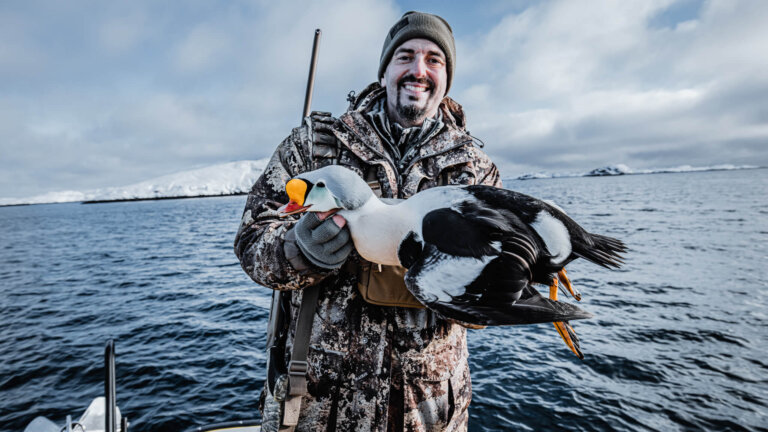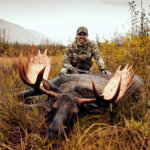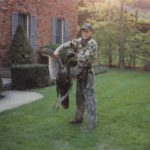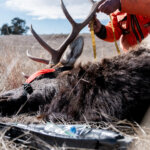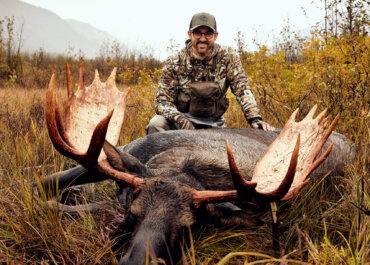Bright sunshine reflected off decoys, causing birds to flare. The hunting was slow, but Mark took several Cackling Geese on his first morning in Cold Bay, Alaska. Later, Mark was able to take a beautiful Red-breasted Merganser, and the following day with his dad, Earl, each took down three Harlequin. The next evening, Mark was able to enjoy his favorite waterfowl for dinner–a Brant that he’d taken that afternoon.

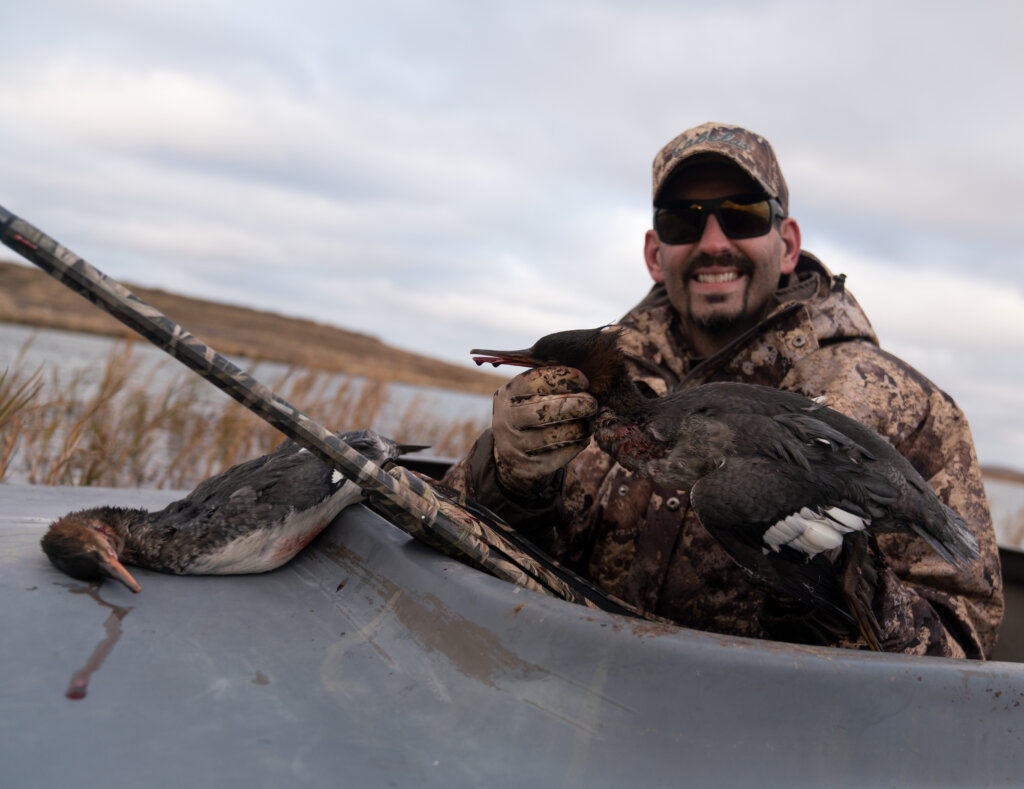
Mark eventually got into Mallards and an Aleutian Green-winged Teal, and took down a mixed bag that included a drake Bufflehead and a Common Goldeneye on his final day in Cold Bay. Then, with the wind at his back, two Greater Scaup screamed over his head. He missed them both, and hoped those misses would not come back to haunt him. He left Alaska with eight of the necessary 43 species.
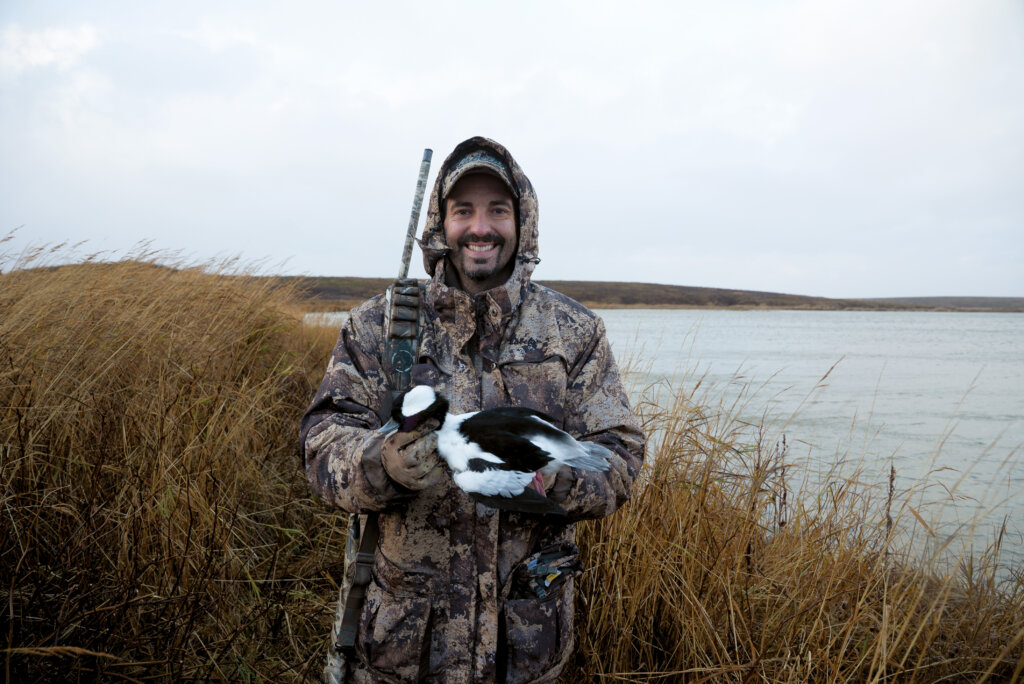
Mark drew a North Dakota Tundra Swan permit, and headed there November 1. On his first day he dropped a pair of Common Mergansers, a Ruddy Duck and a drake Redhead. The next morning, Mark heard swan after swan leave the lake as he waded through cattails in the dark. To his surprise, just after legal shooting light, four Tundra Swans remained. They flew and Mark was able to fill his tag. Later that afternoon he took number 13, a Gadwell.
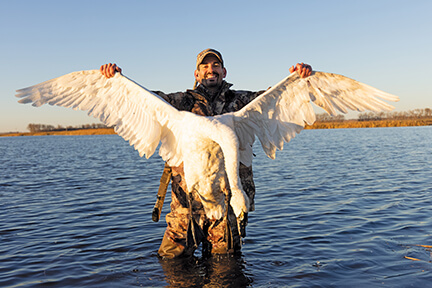
After testing negative for COVID, Mark traveled to Kodiak Island. Several days of nasty weather made the hunting tough, but Mark was able to take his Barrow’s Goldeneye, in addition to a Common Scoter and Surf Scoter. 16 species down!
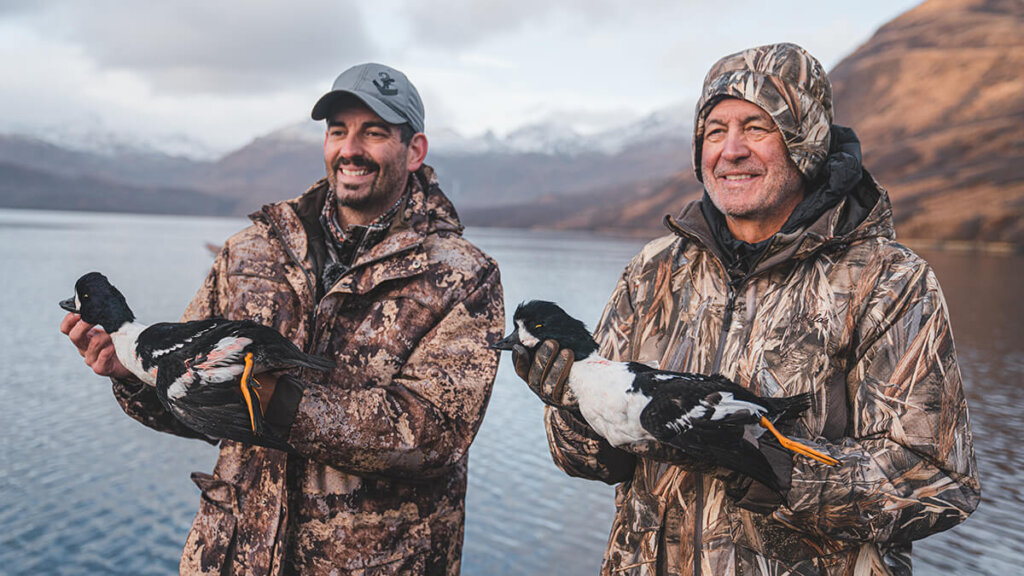
Next up was Maine, where Mark quickly dropped a Common Eider and Long-tailed Duck, then checked a White-winged Scoter off his list. The wind limited Mark’s options the next day. He tried a blind unsuccessfully. He tried a boat, but turned back because the waves were too dangerous. Mark returned to the cabin without taking a single shot. On his final day in Maine, Mark took a Black Duck and Long-tailed ducks. He’d upped his total to 20 of the 43 species.
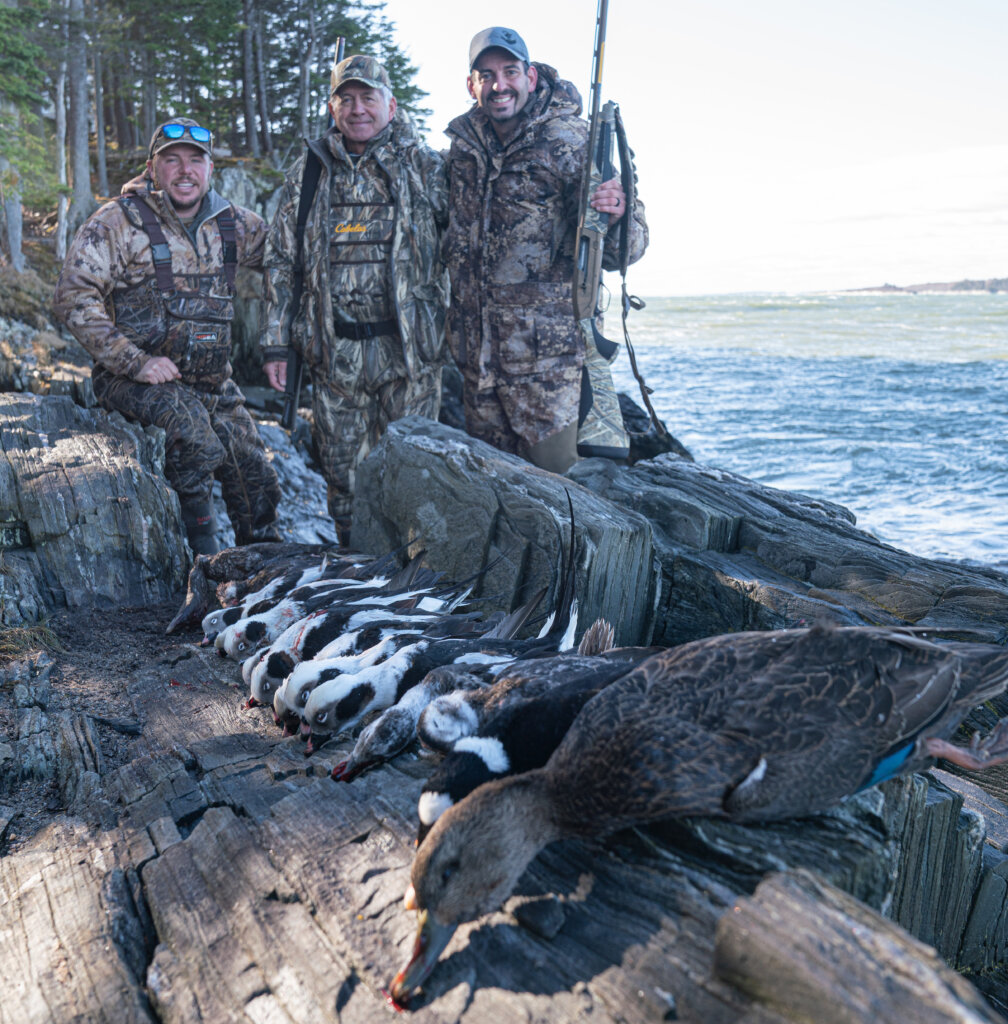
Mark arrived in Sonora on December 6 targeting a Fulvous Whistling Duck. Dry ponds and low water levels made it a tough hunt. He was forced to improvise with makeshift blinds and jump shooting. Those efforts paid off at the end of his first morning with a Pintail and Coot. The next day he hid his silhouette in a dugout on the bank and took a Green-winged teal and Northern Shoveler. On day three, Mark again hid in a dugout, this time on the Sea of Cortez. He didn’t have to wait long for one the best waterfowl hunts he’d ever experienced. In under two hours, Mark had a limit of Brant and was done for the day.
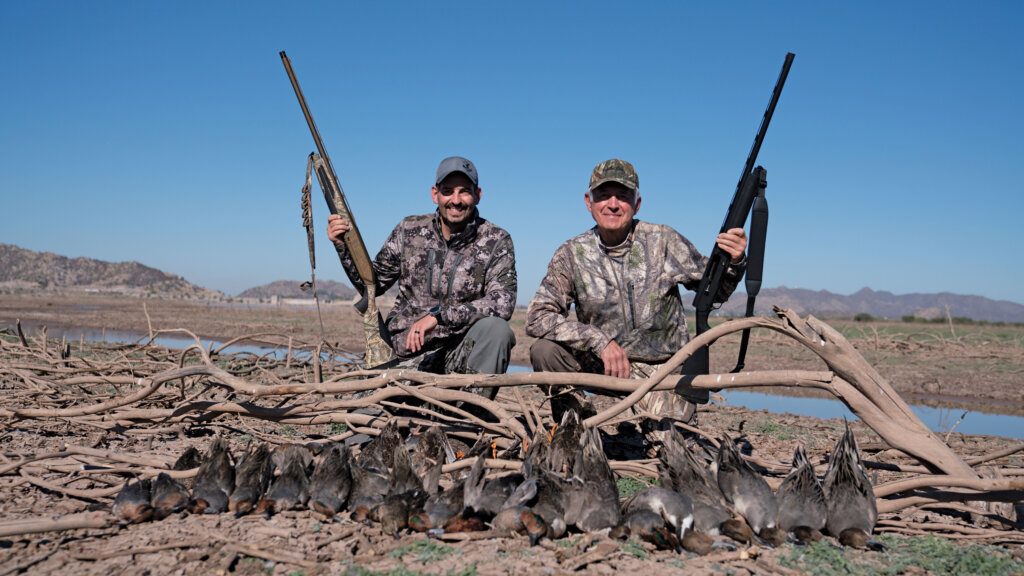
Mark was able to take a mixed bag of Pintail, Gadwall and his second Black Duck of the season the next morning. The highlight was discovering his Gadwall was banded. Unfortunately, the drought had pushed the Fulvous Whistling Ducks farther south.
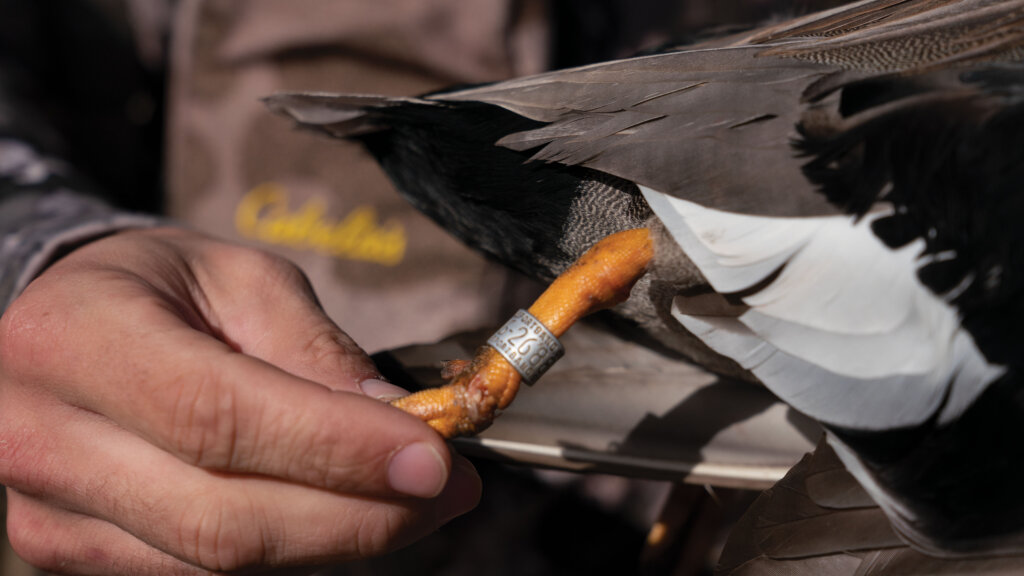
A hunt in Arkansas with his dad was up next. Ducks weren’t flying that first day and no shots were taken. Day two started slow, until a drake Ringneck came in. Options became limited thanks to a downpour, so Mark drove around looking for ducks. He spotted a Hooded Merganser that flew before Mark could make a sneak.
The next morning, Mark and Earl each took a Lesser Scaup before deciding to hunt Specks on cut-rice fields. On their way, Mark detoured to the pond where he’d seen the Hooded Merganser. He made a sneak and took down number 27. The Specks were not coming in close enough that evening on the rice fields. Then, with 15 minutes of shooting light remaining, a pair of Specks unexpectedly came in from behind him. Mark popped up, leaned back and fired a single shot. Number 28 fell from the sky.
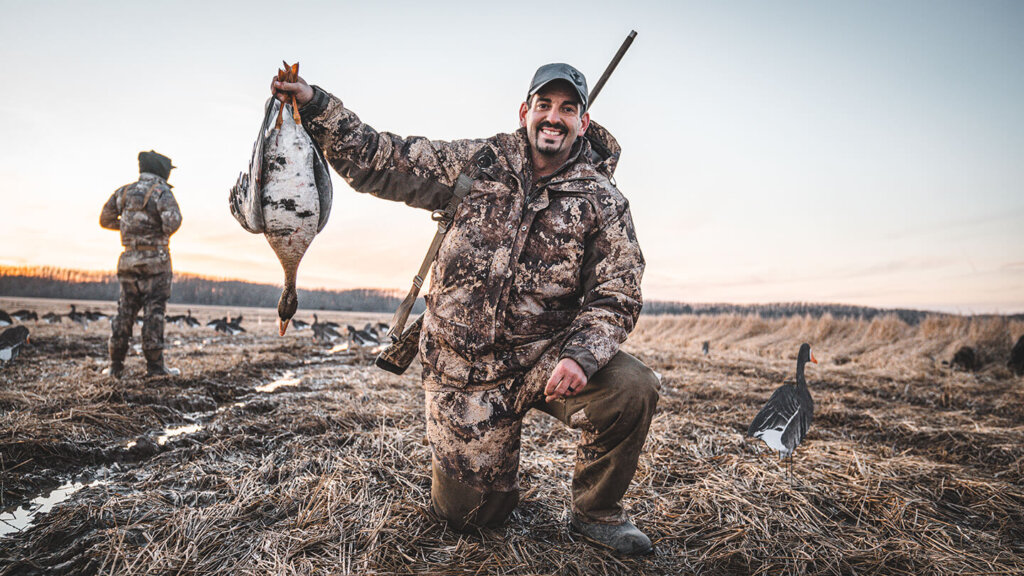
On January 2, Mark headed to Oklahoma for a Sandhill Crane hunt. He quickly filled his daily limit of three, and later added a Canada Goose for number 30. The next morning, Mark took down his Ross Goose
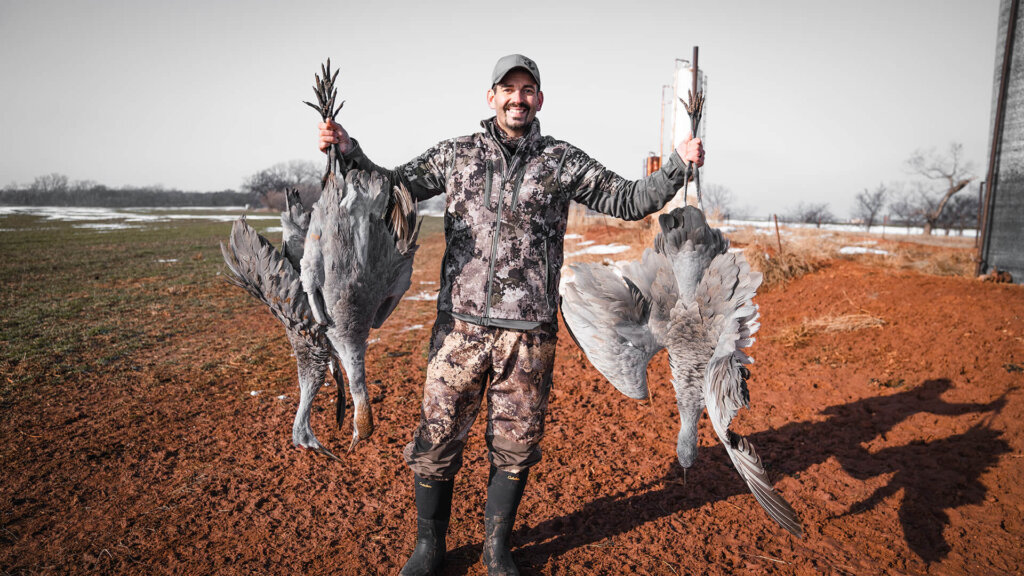
Mark was growing concerned about getting his King Eider. The locations he planned to hunt were all closed because of COVID. It was a long shot, but convincing Greenland to allow him onto the island may be his only option. With all the “easy” species checked off the list, Mark worked with WTA and started planning trips that targeted individual species. Georgia was selected as his next destination. Mark set up on a small island in some thick brush on Seminole Lake. After a couple hours, Mark’s outfitter pulled out his phone to show video that proved that they were in a good spot. As soon as Mark set his shotgun down to view the video, two Drake Canvasback tried landing in the decoys, and there was nothing he could do. Those were the only two ducks that came within range that day.
The next afternoon, Mark was in chest-high water, hidden behind bamboo poles stuck in the sand. He’d missed lunch, and dug Chex Mix out of his waders. Just as he was enjoying his snack, a group of Canvasback came screaming by. He dropped his Chex Mix and hastily shouldered his shotgun. With his third shot, the Canvasback he picked out dropped.
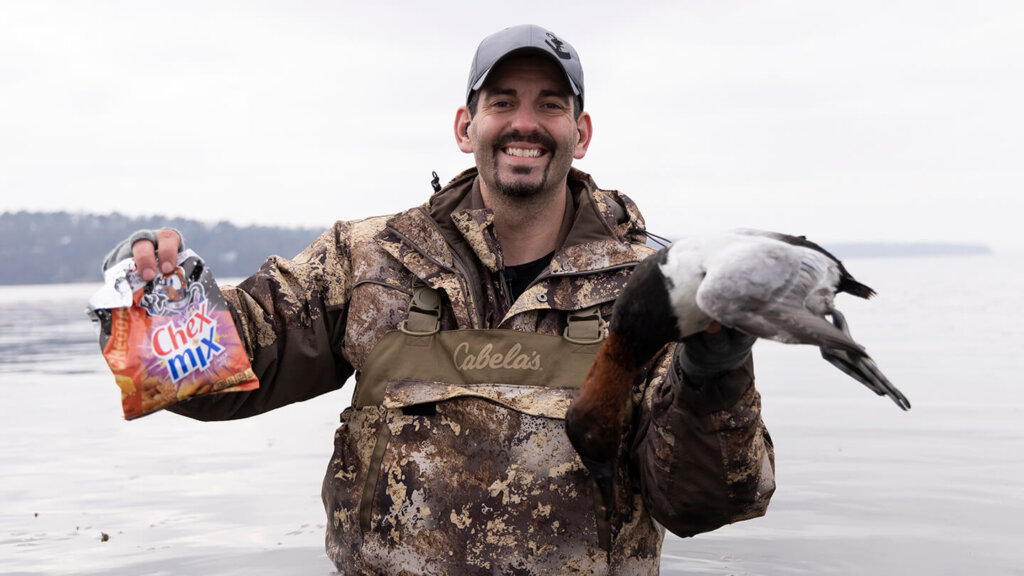
Mark drove to Lake City, Florida the next day. He snuck up to a pond and dropped a Wood Duck, but had to get creative to retrieve it. His cameraman, Justin, thought he could use his drone to retrieve the duck. Mark said, “I honestly never would have imagined I’d be without a dog or boat, trying to retrieve a Wood Duck with a drone.” The drone’s rotors made little waves in the water that pushed the duck towards the bank. Mark had number 33. That evening he drove another 250 miles to Lake Okeechobee.
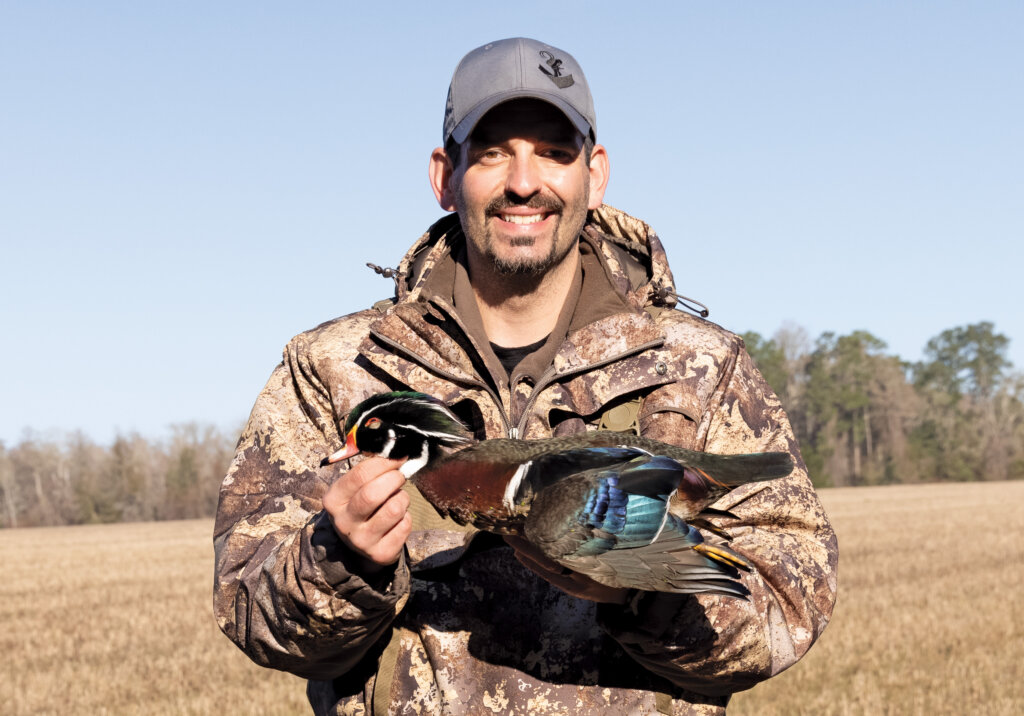
Within 22 minutes of hunting, Mark had a limit of birds that included a Black-bellied Whistling Duck. Mark spotted a group of Mottled Ducks later in the day, but already had his limit. That’s where he started the next morning. Mark quickly took a Mottled Duck, and later dropped a Blue-winged teal. The Fulvous Whistling Duck continued to elude him.
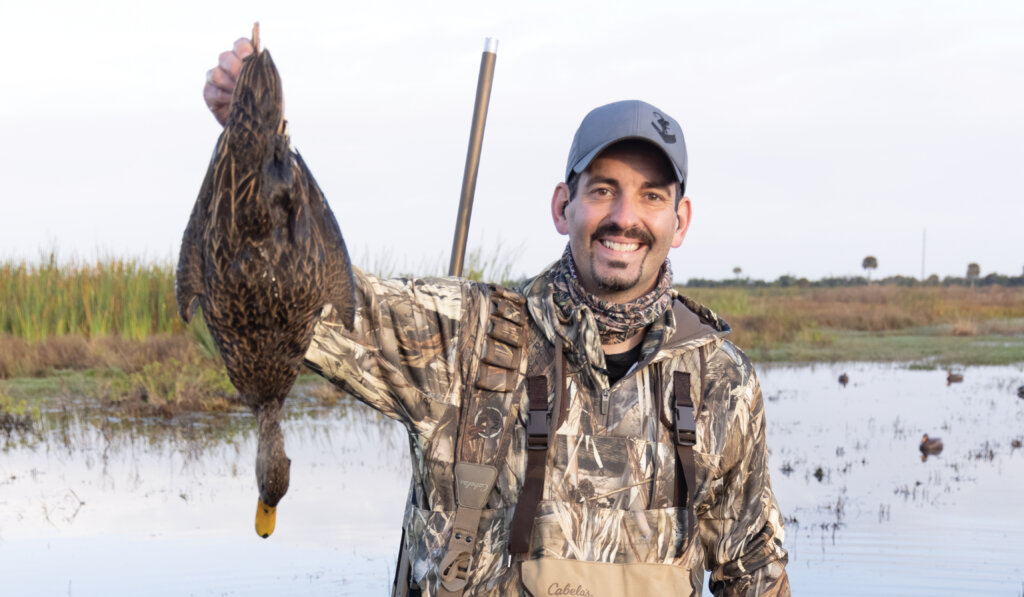
Mark arrived in Rhode Island and set up in a layout boat off the coast. Atlantic Brant were everywhere. Within 10 minutes, Mark had his two-Brant limit. The next morning, he had number 38 in the bag–a Greater Scaup.
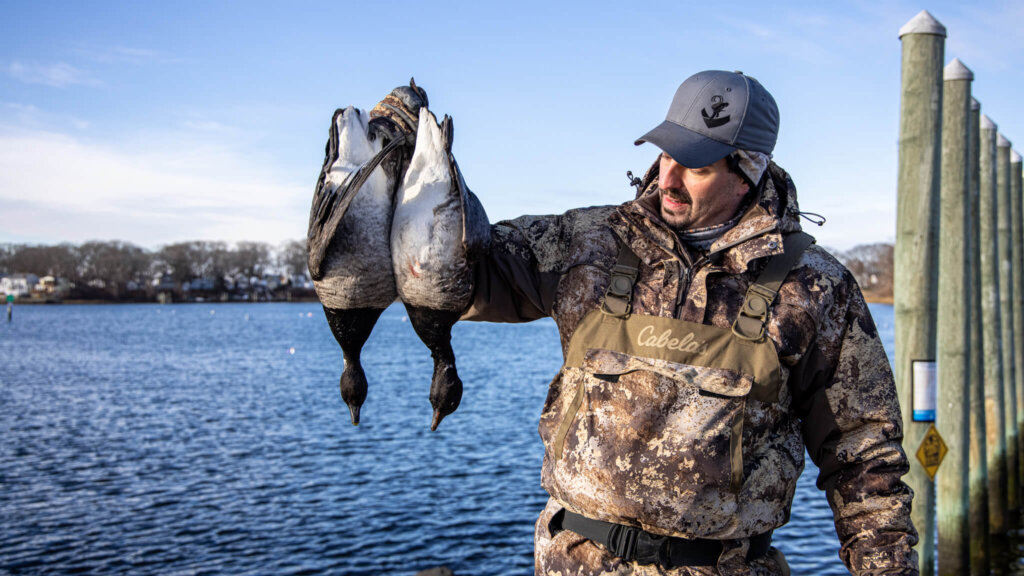
With one day left on the Atlantic coast, a desperation King Eider hunt didn’t seem unreasonable. There were two sightings of a young King Eider in the area. Mark spent the entire day glassing. He never spotted a King, and no shots were taken. January 31 passed, and waterfowl season in the United States closed. Only one possibility for a King Eider remained–a miracle approval to be the first American allowed into Greenland since COVID hit.
On February 2 Mark traveled to Arkansas. He needed a Common Snow and Blue Snow to up his total to 40. After a slow morning, the geese started coming within shooting range. Mark shot three Snows and two Ross. On day two, Mark set up in a cut corn field. A group of Blues came in and Mark added number 40 to his tally. That evening, Mark reached out to his contacts in Greenland. They had very little hope that the country would open up to Americans anytime soon.
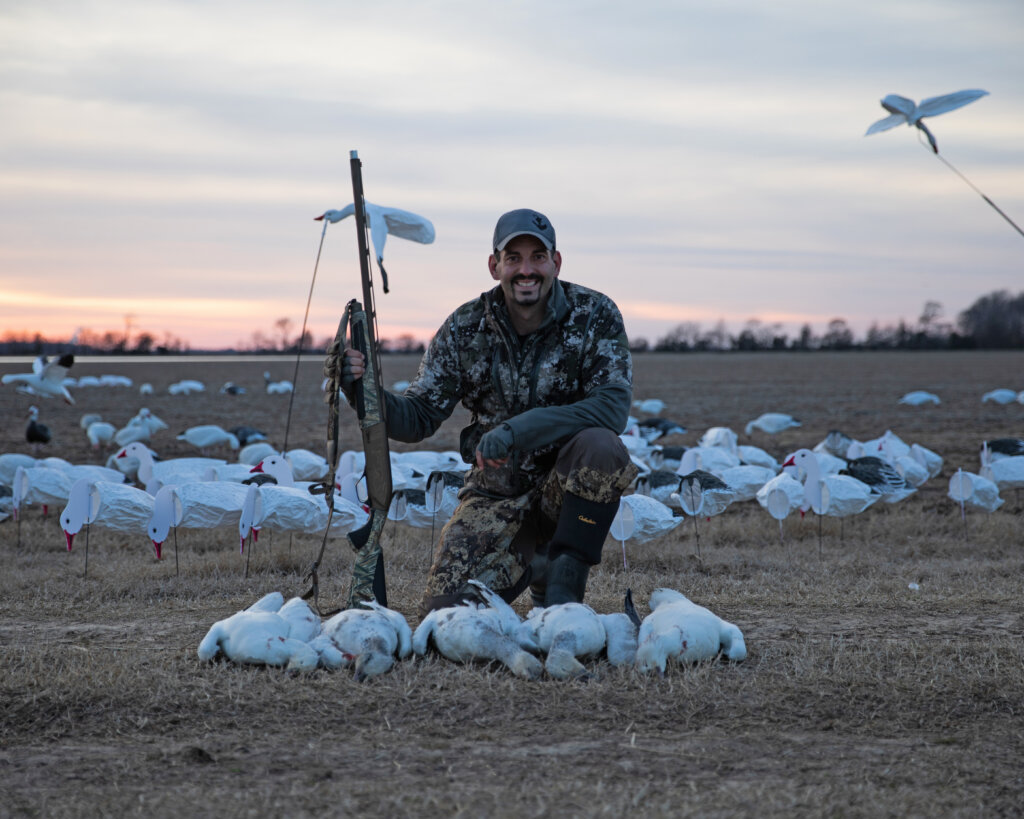
A Fulvous Whistling Duck in Sinaloa, Mexico was his next target. His first morning there he took the rare Cinnamon Teal. Mark glassed thousands of Black-bellied Whistling Ducks, but didn’t spot a single Fulvous Whistling Duck. They had all moved farther south. He needed a new plan.
That night, WTA connected Mark with an outfitter south of Sinaloa in Culiacán. After a short flight, he was in a blind in a marshy area. Black-bellied and Fulvous whistling ducks came in together. It was an amazing hunt. He ended the day with a mixed bag of Black-bellies, Fulvous, Pintail and a Blue-winged Teal. Only one species remained.
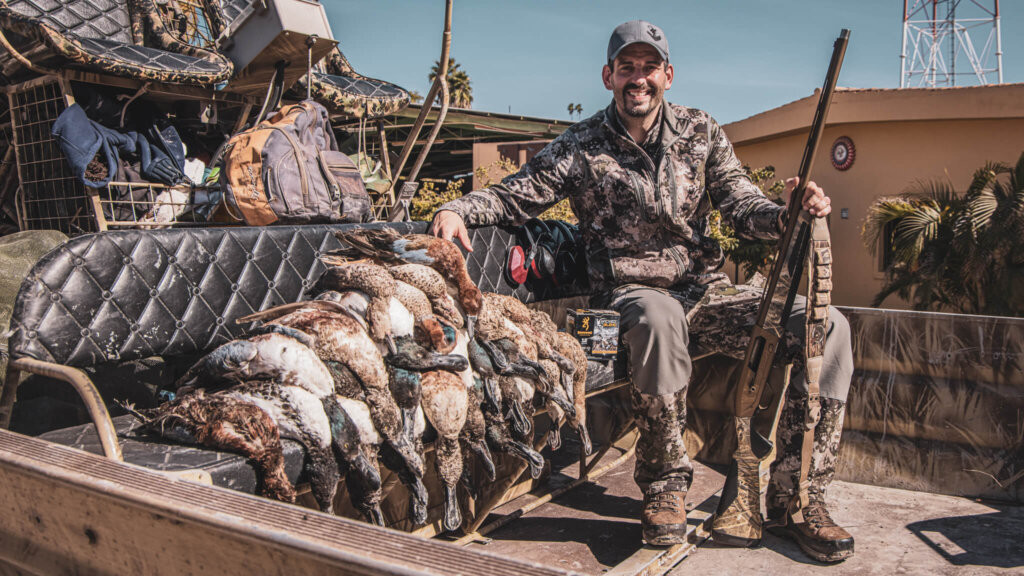
Mark focused on gaining access to Greenland. The primary obstacle was getting government approval to enter during the COVID lockdown. Greenland was pushing to grow tourism and increase the number of visitors—particularly hunters. Mark saw an opportunity to get more hunters to the island if he could find a high-quality outfitter that WTA could send hunters to. Ultimately, Greenland agreed that a relationship with Mark and WTA would be beneficial. He could hunt Greenland!
Mark purchased every Common Eider decoy he could find–all eight of them. On March 20, Mark and his friend Matt were in Greenland ready to hunt, but there were no hunting boats available to non-residents. They improvised and rented a bright yellow water taxi. Justin had his drone up videoing–the same drone that helped retrieve Mark’s Wood Duck in Florida. There wasn’t a spot to land the drone, so Mark reached up to grab it out of the air. As he reached for it, they hit a large wave and three of Mark’s fingers got into the drone’s blades. Blood was everywhere. Mark grabbed a first-aid kit, and while he was putting on bandages, guess what came within range. Matt took Mark’s shooting spot and made a great shot!
Mark got his fingers taped up and congratulated Matt on an amazing King Eider. It wasn’t long before a King flew in front of Mark. His entire season came down to this moment. Mark was on day number 110 in the field with one species remaining for a successful North American Waterfowl Slam. He shouldered his Browning, put his bead on the King, and squeezed the trigger. Number 43 dropped in the water! He had done it!
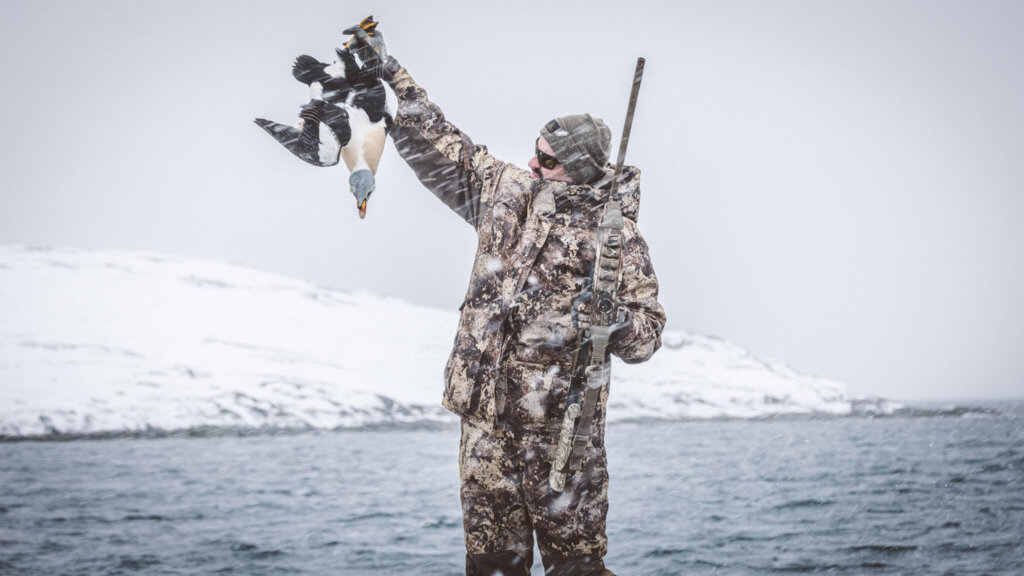
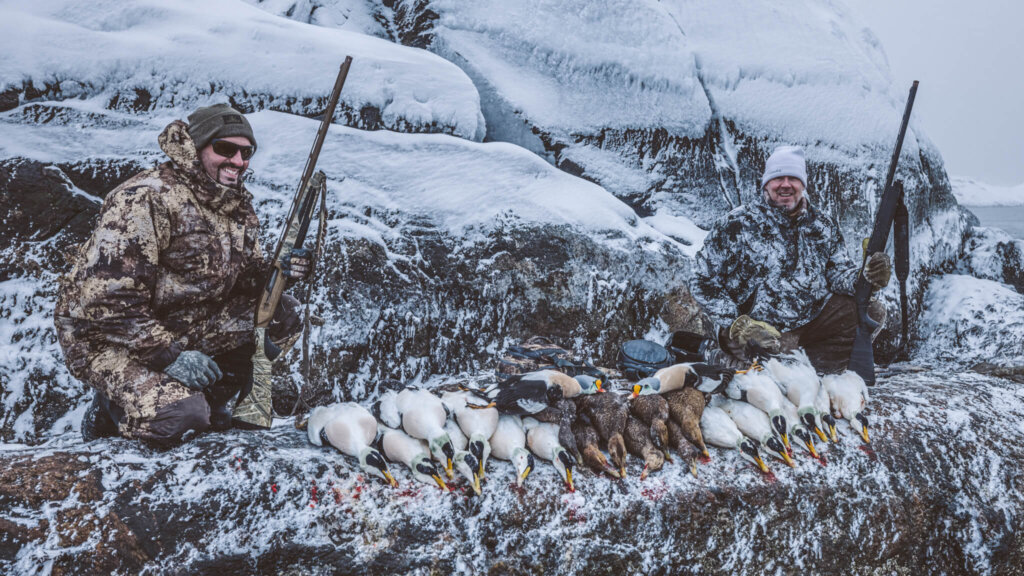
One thing’s for sure–this adventure never would have been possible without the knowledge that WTA consultants provided from day one of the Slam. They were able to pinpoint the locations that provided the best odds to successfully harvest hard-to-find species. They helped Mark ensure he was properly transporting firearms, had the necessary permits and arranged the outfitters that Mark used. Mark’s 43 species is a true testament to the experience and effectiveness of Worldwide Trophy Adventures and the outfitters that they work with.
